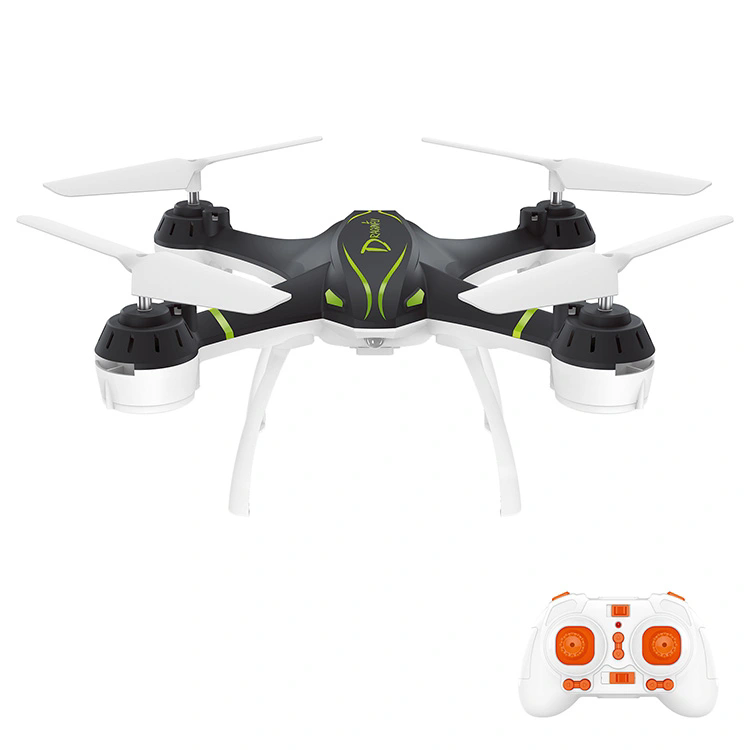Components of an RC Quadcopter
2024-06-04
RC quadcopters, also known as drones, are remotely piloted aircraft with four rotors that provide lift and propulsion. These versatile flying machines have gained popularity for various recreational and commercial applications, including aerial photography, videography, racing, surveillance, and agricultural monitoring. Here's a comprehensive overview of RC quadcopters:
Components of an RC Quadcopter:
1. Frame: The frame serves as the structure that holds all components together. It's typically made of lightweight materials like carbon fiber or durable plastics.
2. Motors: Four electric motors power the quadcopter's rotors, generating lift and controlling its movement.
3. Propellers: Attached to each motor, propellers produce thrust and lift to keep the quadcopter airborne.
4. Flight Controller: The brain of the quadcopter, the flight controller processes data from sensors and pilot commands to adjust motor speeds and stabilize the aircraft.
5. Battery: Supplies power to the motors, flight controller, and other electronic components.
6. Electronic Speed Controllers (ESCs): Control the speed of each motor by adjusting the power supplied to them.
7. Radio Transmitter and Receiver: The transmitter sends control signals to the quadcopter, while the receiver onboard the quadcopter receives and interprets these signals.
8. Sensors: Accelerometers, gyroscopes, barometers, and GPS units provide data on the quadcopter's orientation, altitude, and position.
9. Camera and Gimbal (Optional): Some quadcopters come equipped with cameras and gimbal stabilization systems for aerial photography and videography.
Types of RC Quadcopters:
1. Toy Quadcopters: Entry-level quadcopters designed for beginners and recreational flying. They're usually small, affordable, and easy to fly.
2. Camera Drones: Quadcopters equipped with cameras for capturing photos and videos from the air. They range from hobbyist models to professional-grade drones used in filmmaking and aerial mapping.
3. FPV Racing Drones: Built for high-speed racing, these quadcopters feature first-person view (FPV) systems that allow pilots to see through the drone's onboard camera in real-time.
4. Foldable Quadcopters: Compact quadcopters with foldable arms for easy transport and storage, ideal for travelers and outdoor enthusiasts.
5. Professional and Commercial Drones: Advanced quadcopters designed for industrial applications such as agriculture, construction, search and rescue, and infrastructure inspection.
Features and Considerations:
1. Flight Time: Consider the quadcopter's battery life and flight time, as it determines how long you can fly before needing to recharge or swap batteries.
2. Flight Range: Check the quadcopter's range, which indicates how far it can fly from the transmitter before losing signal.
3. Camera Quality: If aerial photography or videography is important to you, choose a quadcopter with a high-quality camera and gimbal stabilization for smooth, clear footage.
4. Flight Modes: Look for quadcopters with different flight modes, such as altitude hold, GPS-assisted flight, and autonomous features like waypoint navigation.
5. Durability and Build Quality: Consider the quadcopter's construction and materials to ensure it can withstand crashes and rough handling.
6. Controller Compatibility: Some quadcopters can be flown using dedicated controllers or smartphone apps. Choose one that suits your preference and flying style.
7. Regulations and Restrictions: Familiarize yourself with local regulations and airspace restrictions for flying drones in your area.
Uses of RC Quadcopters:
1. Recreational Flying: Enjoy flying for fun and relaxation in open spaces or designated flying areas.
2. Aerial Photography and Videography: Capture stunning photos and videos from unique aerial perspectives.
3. FPV Racing: Compete in high-speed drone racing events using FPV goggles for immersive flying experiences.
4. Surveying and Mapping: Use drones equipped with cameras and sensors for land surveying, mapping, and 3D modeling.
5. Search and Rescue: Assist emergency responders in locating missing persons or assessing disaster areas from the air.
6. Agricultural Monitoring: Monitor crops, fields, and livestock using drones equipped with multispectral cameras and sensors.
7. Infrastructure Inspection: Inspect bridges, buildings, power lines, and other infrastructure for damage or maintenance needs.
RC quadcopters offer endless possibilities for exploration, creativity, and utility. Whether you're a hobbyist, enthusiast, or professional user, there's a quadcopter to suit your needs and interests.



